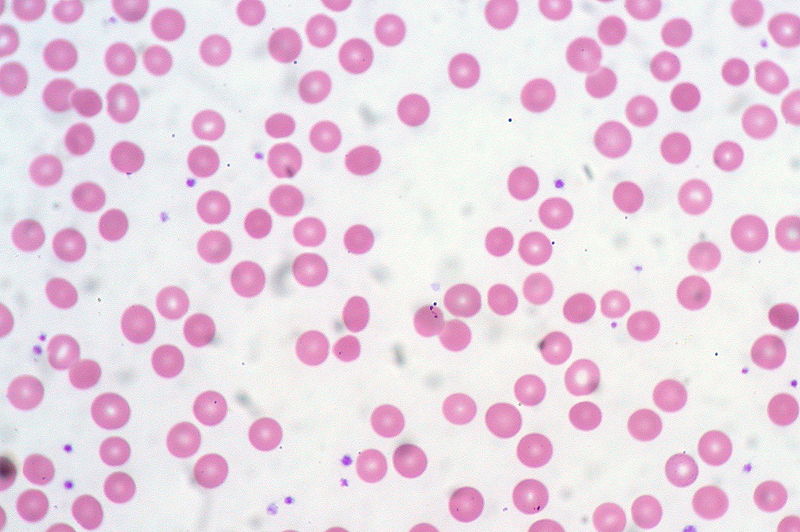Playlist
Show Playlist
Hide Playlist
Anemia: Iron Studies
-
Slides Anemia Overview.pdf
-
Reference List Pathology.pdf
-
Download Lecture Overview
00:00 Next, Well, as I said, we’re going to hit microcytic anemias. 00:05 And with microcytic anemias, this will be the only time for you in which you would even perhaps think about considering doing an iron study, clear? “So Dr. Raj, you’re saying with macrocytic, you won’t do iron studies?” Correct. 00:21 And even if you did, well, with macrocytic and most normocytic causes, the iron studies will come back to be? Normal. 00:28 Okay. 00:29 So under microcytic, obviously we’re going to work through iron quite a bit. 00:33 Iron deficiency anemia, anemia of chronic disease, and sideroblastic anemia. 00:38 Then, what about the thalassemias? It has nothing to do with the heme component, right? Don’t worry, we’ll talk more about this as well. 00:46 Now, before we get into any of that, I need you to make sure or I need to make sure you have a proper understanding of this graph. 00:53 Huge, huge. It will tell you all the relevant iron study labs that you want to know for microcytic anemias. 01:01 Let’s begin. 01:02 The first thing that you want to do always is serum iron. 01:06 Number one, serum iron. 01:10 Number two, when iron gets into your body, then it’s stored. 01:15 And by storage, I don’t mean what’s going on here with the liver and such or bone marrow. But what I’m referring to is the fact that here, you have ferritin. 01:23 So ferritin, think of this as more or less being kind of like your macrophage, okay? So literally, it’s going to consume the iron that is then coming in. 01:30 And in the meaning, of course, you already know about iron, which is Fe. When you put it into your mouth, it’s in the form of? Good. 01:37 3+ That’s your ferric, right? Ferric. 01:41 All right. 01:42 So ferric, so that’s another discussion. 01:44 And that’s something that we’ve discussed in basic pathology. 01:46 But ferric is what you’re consuming, but that which is used by the body is ferrous. 01:52 Keep that in mind. 01:54 Because at some point, you need to convert that ferric into ferrous. 01:58 All right, now, this iron is in your ferritin. 02:01 Remember, this is perfectly normal. 02:03 So second lab test for iron study will be ferritin, number two. 02:06 Next, where are you going to go with this is going to be communication with the liver. 02:11 Who? Ferritin. So the liver, think of it, the liver as being this really the sensor of the ferritin. And it will measure or assess how much iron is in my ferritin. 02:25 And if there is not enough iron in your ferritin, then the liver is going to produce just the right amount of transferrin, number three. 02:32 But understand that you will not be measuring laboratory-wise transferrin. 02:38 Transferrin is now called, on your labs, as TIBC. Total iron binding capacity. 02:44 All I’m doing here is setting up the organization of this graph with a different and important iron study labs. 02:50 Number, serum iron. 02:52 Number two, ferritin. 02:52 Ferritin has an inverse relationship with the liver. Meaning to say that if you have too much iron and ferritin, then you’ll have decreased TIBC. 03:03 Remember transferrin is not what they’re going to put in your labs. But you know that transferrin is equivalent to total iron binding capacity. 03:12 Next, do not get your binding capacity confused with this little box that we see on the left, the column. 03:19 And this column that you see here is your transferrin which is being saturated with iron. 03:23 So it’s called transferrin saturation. It’s very, very easy to confuse your transferrin with your transferrin saturation. 03:33 Hence, they call it transferrin. 03:34 But laboratory wise, it’s total iron binding capacity. 03:37 These are the four that we’ll keep playing around with. 03:39 At this point, all I’m doing, laying down the foundation as to how to play with these. 03:43 What are they again? Serum iron. 03:45 Number two, ferritin. 03:47 Inverse relationship with TIBC. 03:49 And number four, saturation.
About the Lecture
The lecture Anemia: Iron Studies by Carlo Raj, MD is from the course Introduction to Red Blood Cell Disorders.
Included Quiz Questions
Which of the following is the primary form of iron stored in cells?
- Ferritin
- Hepcidin
- Erythropoietin
- Transthyretin
- Transferrin
Which of the following cells is primarily responsible for the homeostasis of iron?
- Macrophage
- Blast cell
- Adipocyte
- B lymphocyte
- T lymphocyte
Which of the following statements regarding the relationship between TIBC (total iron binding capacity) and other iron studies is most accurate?
- Increased serum ferritin results in decreased TIBC.
- Excess ferritin results in increased TIBC.
- Decreased ferritin results in decreased TIBC.
- Decreased serum iron results in decreased TIBC.
Customer reviews
5,0 of 5 stars
| 5 Stars |
|
2 |
| 4 Stars |
|
0 |
| 3 Stars |
|
0 |
| 2 Stars |
|
0 |
| 1 Star |
|
0 |
Very clear and concise. Explains diagrams and processes extremely well.
Dr Raj puts things in a very concise and easy to understand manner which links physiology to clinical findings. Love it




